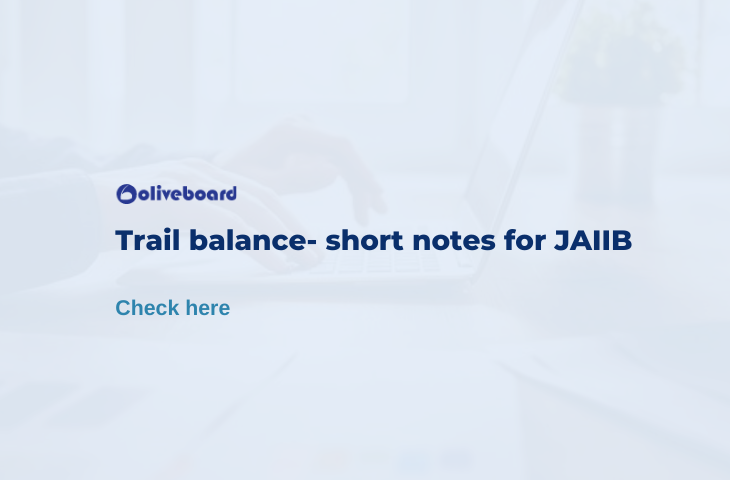A Trial Balance is a record of accounts with their current balances as of a specific date. The list of account balances is normally created at the end of the accounting cycle, and it is organized by credit and debit balances. The books must be reconciled before financial statements are prepared at the end of a given period, i.e., total debits must equal total credits. A Trial Balance is used to ascertain this parity.
Purpose of a Trial Balance
In one column, debit balances are indicated, while credit balances are shown in another. The totals in each column should be the same. The ledger is considered to be in balance when this happens. The purpose of drawing a Trial Balance for a business is to discover any mathematical problems in the double-entry system of accounting. The trial balance is deemed balanced if the total debts match the total credits, and the ledgers should be free of mathematical mistakes.
There are two reasons for preparing a Trial Balance:
- To check arithmetic correctness, i.e., if the double-entry system of bookkeeping is used, the credit and debit totals should match.
- To prepare financial statements, such as the Trading and Profit and Loss Accounts, as well as the Balance Sheet.
A Ledger is made up of several entries in separate accounts. Trial Balance is the process of gathering all ledger balances and displaying them on a single sheet as of a specific date. It allows the trader to keep track of the quantities owed to clients and the amounts owed to suppliers. It simplifies the process of preparing final accounting. A trial balance discrepancy can be produced by incorrect summing or balancing of the ledger. While totaling the figures in subsidiary books, various mistakes may occur, resulting in a trial balance discrepancy.
Classification of Errors
All mistakes can be categorised into one of four categories, depending on the nature of the error:
Errors of Commission: It occurs as a result of the incorrect transaction posting, incorrect totalling or balancing of accounts, incorrect casting of subsidiary books, or incorrect recording of amounts in the books of original entry, among other things.
Errors of Omission: This can occur during the recording of transactions in the books of initial entry or during the posting of a transaction to the ledger. There are two sorts of these: a full omission mistake (ii) a partial omission error. A full omission mistake occurs when a transaction is omitted from the books of the original record.
Errors of Principle: The entries are entered according to the recognised accounting rules. When one of these principles is broken or neglected, the errors that ensue are regarded as errors of principle.
Compensating Errors: It occurs when two or more errors are made in such a manner that the net effect of the errors on the debit and credit balances of accounts is zero.
Rectification of Errors
For error rectification, errors can be divided into two categories:
Errors that do not affect the Trial Balance
The following inaccuracies have no impact on the Trial Balance totals’ equality:
- Errors of Omission: A missing record of a transaction with no debit or credit entry. For example, the proprietor’s cash drawings of ₹1000 were not recorded.
- Errors of Commission: It occurs when an entry is made to the proper side of the ledger, but to the incorrect account, i.e., goods are submitted to the incorrect account of the same class, e.g. A customer makes a cash payment of ₹3000. Rohan was mistakenly credited to the account of Ron, another client.
- Errors of Principle: A transaction’s entry is posted in the wrong type of account, i.e., a cost is classified as an asset and vice versa. For example, ₹7000 was debited to the Building Account for building repairs.
- Complete Reversal of Entries: A debited account is credited, and vice versa. For example, a cheque for ₹6000 obtained from Sita was debited from Sita’s account and given credit to the Bank Account.
- Compensating Errors: On one side of the ledger, an error (or mistakes) compensates for an error (or mistakes), e.g. Both the Purchases and Sales Accounts were overcast by ₹300 each.
- Initial Entry Errors: The original amount may have been entered wrongly, but the right double-entry principle was observed using this inaccurate figure. For example, credit sales of ₹9720 to Ranveer were entered in the Sales Account and Ranveer’s account as ₹7920.
Errors that affect the Trial Balance
Errors that the Trial Balance reveals are those that lead the Trial Balance totals to differ.
- Errors in Calculation: If the Trial Balance totals or net account balances are incorrectly calculated, the Trial Balance will not balance. For example, if the cash balance was incorrectly calculated, the Trial Balance totals will not balance.
- Errors in Omission of One Entry: If a transaction’s debit or credit entry is omitted, the Trial Balance’s totals will not correspond, e.g. Only the Bank Account was debited from a check for ₹6000 received for commission.
- Posting to the Incorrect Side of an Account: Entering information into the wrong side of an account would result in one side of the ledger being greater than the other. For example, a cheque for ₹3000 given to creditor Sam was credited rather than debited to his account.
- Amount errors: The Trial Balance will not balance if the debit entry of a transaction varies in amount from the credit entry. For example, cash received from Bharat was debited to the cash as ₹5460 and credited to Bharat’s account as ₹4560.
Suspense Account
When the Trial Balance does not balance owing to one-sided bookkeeping mistakes, an accountant records the imbalance between the debit and credit sides of the trial balance as Suspense A/c. The amount in the Suspense A/c decreases and eventually becomes zero as we find and correct the faults. As a result, we are unable to classify the Suspense A/c. It’s a temporary account with a debit or credit balance based on the circumstances.
The accountant must follow the procedures below when employing the Suspense A/c to correct one-sided errors:
- The account associated with the error is identified.
- Determination of the account’s excess debit or credit, as well as any short debit or credit.
- In the event of a short debit or over credit in an account, we must debit the account in question. In contrast, if an account has a short credit or an excess debit, we must credit the account.
- Debit or credit the Suspense A/c to complete the appropriate journal entry.
Adjusting Entries
- The accounts prepared after the trading year are known as final accounts. The ultimate results of the firm are shown in these accounts. Final accounts are compiled to determine if a company has made a profit or suffered a loss.
- All ledger accounts are matched after the accounting year, and then a trial balance is generated. Final accounts, such as trade, profit and loss accounts, and balance sheets, are generated from the trial balance.
- All costs and earnings for the entire time must be considered when establishing a trading and profit and loss statement. If costs have been incurred but not paid, or income is due but not collected, essential entries must be made to reflect the true state of the business. These are known as “Adjusting Entries.”
Closing Entries
All cost and income accounts must be closed after the cash year. These accounts’ balances are moved to a trading account and a profit and loss account, respectively. Closing entries are the entries that are used to transfer these amounts.
FAQ’s
1. What is Trial Balance?
A Trial Balance is a record of accounts with their current balances as of a specific date.
2. What are the two reasons for preparing a Trial Balance?
- To check arithmetic correctness, i.e., if the double-entry system of bookkeeping is used, the debit and credit totals should be equal.
- To prepare financial statements, such as the Trading and Profit and Loss Accounts, as well as the Balance Sheet.

I have been writing blog content for different exams for more than 3 years now. Being an aspirant myself and having closely worked with students and mentors, I know what kind of content an aspirant is looking for. Apart from writing content, I like watching movies.
Oliveboard Live Courses & Mock Test Series
- Download IFSCA Grade A PYQs
- Download SEBI Grade A PYQs
- Download 500+ Free Ebooks for Govt. Exams Preparations
- Attempt Free SSC CGL Mock Test 2024
- Attempt Free IBPS Mock Test 2024
- Attempt Free SSC CHSL Mock Test 2024
- Download Oliveboard App
- Follow Us on Google News for Latest Update
- Join Telegram Group for Latest Govt Jobs Update


